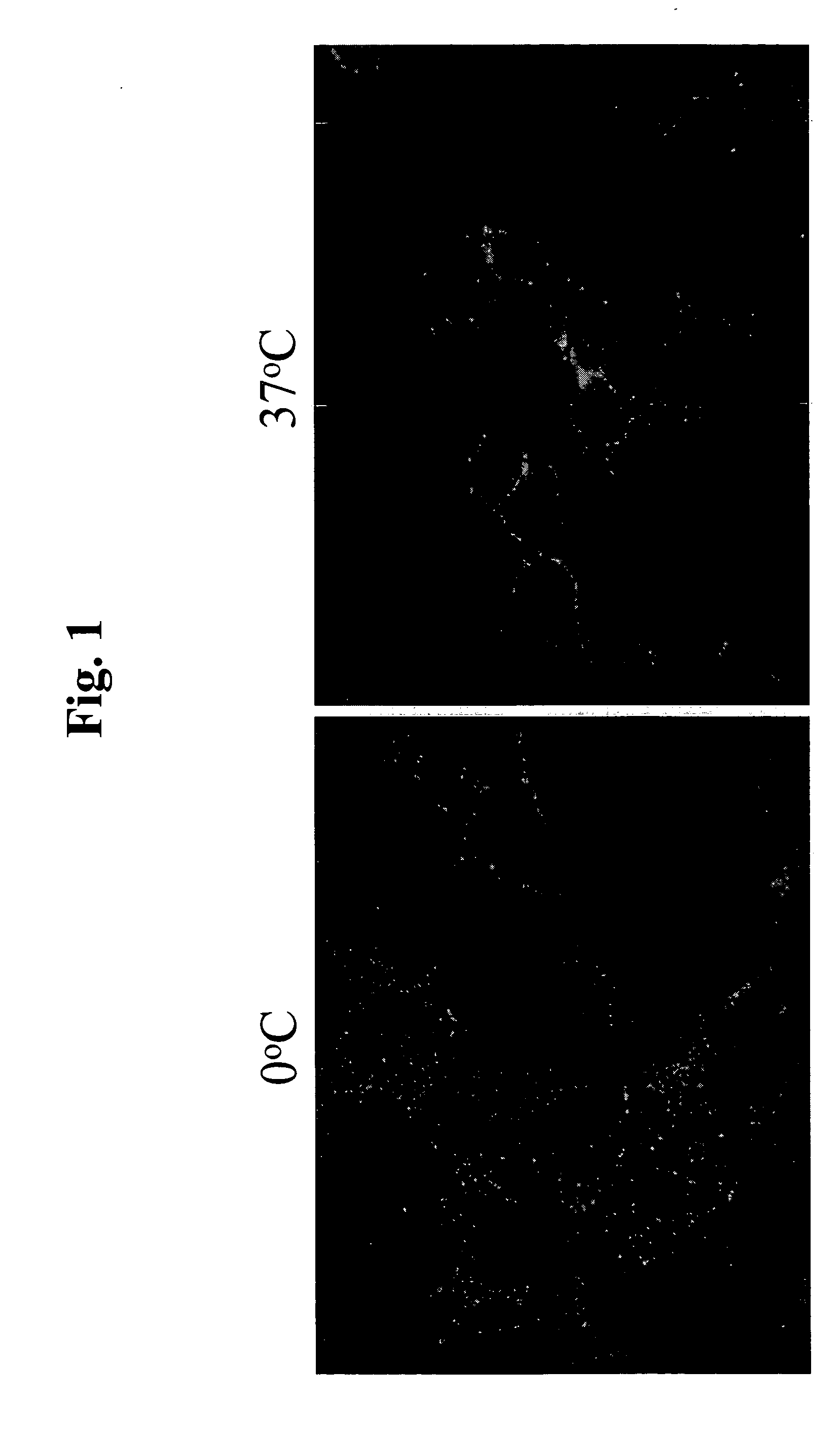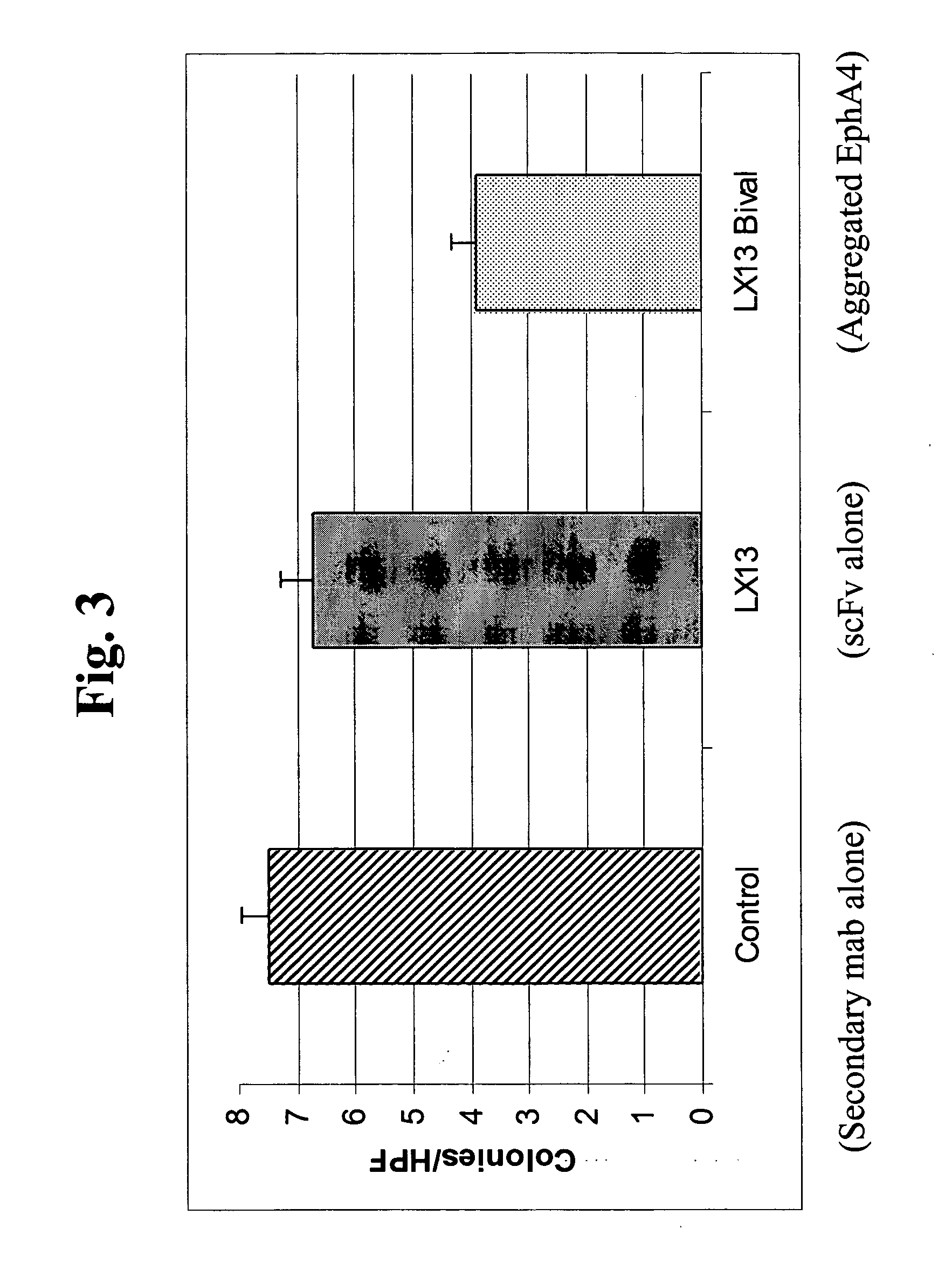Use of EphA4 and modulator of EphA4 for diagnosis, treatment and prevention of cancer
a cancer and epha4 technology, applied in the field of hyperproliferative cell disease diagnosis, treatment and prevention, can solve the problems of reducing the contact between cells and cells, reducing the binding of epha4-ligands, and inability to stabilize interactions with ligands, so as to inhibit tumor cell growth and/or metastasis, reduce the proliferation and/or metastatic behavior of cells, and reduce the expression of epha2.
- Summary
- Abstract
- Description
- Claims
- Application Information
AI Technical Summary
Benefits of technology
Problems solved by technology
Method used
Image
Examples
Embodiment Construction
[0072] The present invention is based, in part, on the inventors' discovery that EphA4 is upregulated in certain cancer cells and anti-EphA4 antibodies reduce certain cancer cell behaviors, such as cell attachment and growth in soft agar. Anti-EphA4 antibodies promote phosphorylation of EphA4 and an EphA4-associated protein. The present inventors also believe that EphA4 plays a role in cancer and cell proliferation similar to EphA2. EphA2 monoclonal antibodies that agonize EphA2 can inhibit cancer cell proliferation and invasiveness by reducing the levels of EphA2 expression in these cancer cells (see co-pending U.S. patent application Ser. No. 10 / 436,782, entitled "EphA2 Monoclonal Antibodies and Methods of Use Thereof" filed May 12, 2003). Decreased EphA4 activity or other results of EphA4 signaling may selectively inhibit malignant cancer cell growth. In particular, decreased levels of EphA4 and phosphorylation of EphA4 and / or a 75 kDa EphA4-associated protein may be achieved wit...
PUM
| Property | Measurement | Unit |
|---|---|---|
| Fraction | aaaaa | aaaaa |
| Atomic weight | aaaaa | aaaaa |
| Interaction | aaaaa | aaaaa |
Abstract
Description
Claims
Application Information
 Login to View More
Login to View More - R&D
- Intellectual Property
- Life Sciences
- Materials
- Tech Scout
- Unparalleled Data Quality
- Higher Quality Content
- 60% Fewer Hallucinations
Browse by: Latest US Patents, China's latest patents, Technical Efficacy Thesaurus, Application Domain, Technology Topic, Popular Technical Reports.
© 2025 PatSnap. All rights reserved.Legal|Privacy policy|Modern Slavery Act Transparency Statement|Sitemap|About US| Contact US: help@patsnap.com



